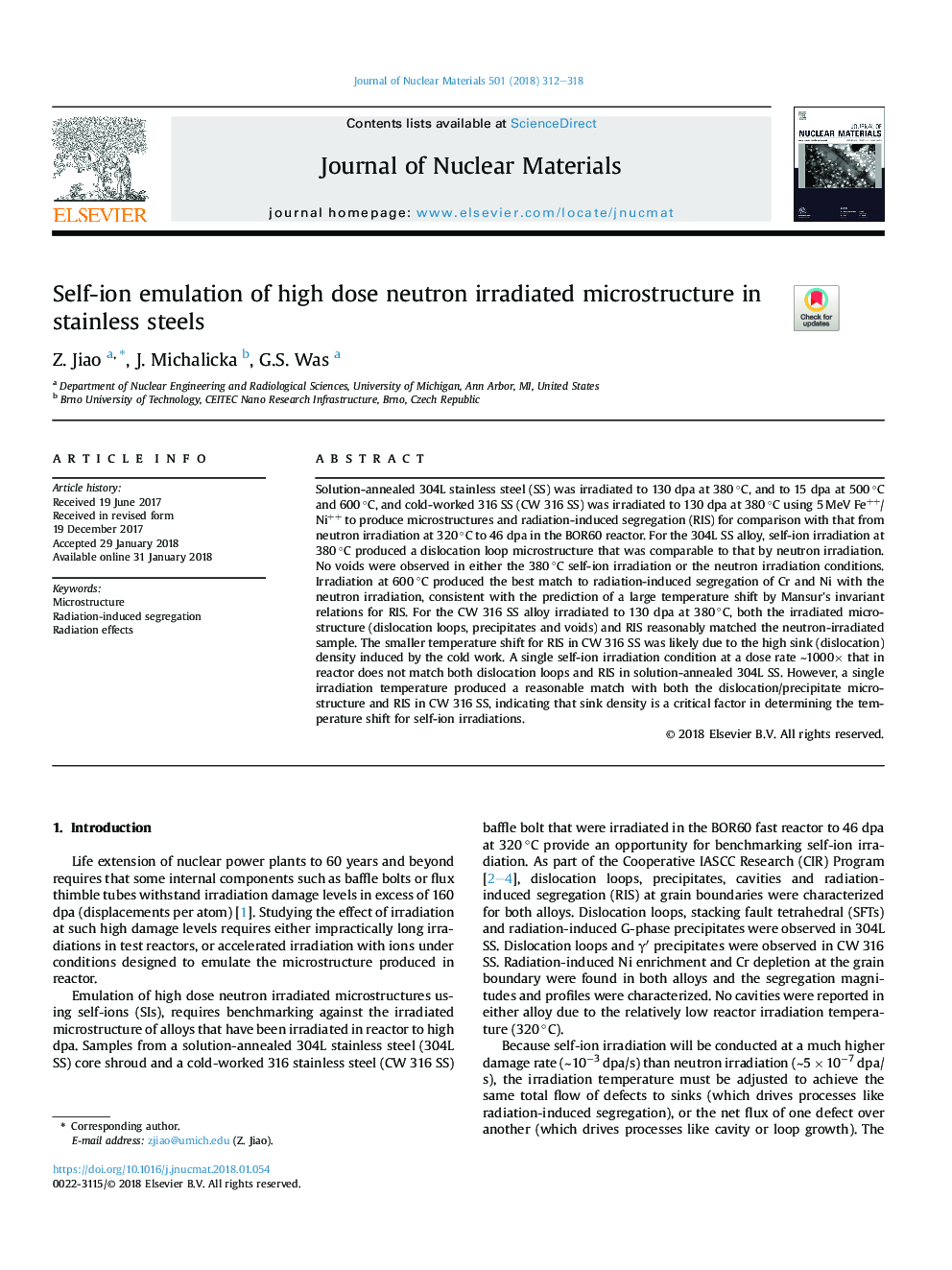| Article ID | Journal | Published Year | Pages | File Type |
|---|---|---|---|---|
| 7963478 | Journal of Nuclear Materials | 2018 | 7 Pages |
Abstract
Solution-annealed 304L stainless steel (SS) was irradiated to 130 dpa at 380â¯Â°C, and to 15 dpa at 500â¯Â°C and 600â¯Â°C, and cold-worked 316 SS (CW 316 SS) was irradiated to 130 dpa at 380â¯Â°C using 5â¯MeV Fe++/Ni++ to produce microstructures and radiation-induced segregation (RIS) for comparison with that from neutron irradiation at 320â¯Â°C to 46 dpa in the BOR60 reactor. For the 304L SS alloy, self-ion irradiation at 380â¯Â°C produced a dislocation loop microstructure that was comparable to that by neutron irradiation. No voids were observed in either the 380â¯Â°C self-ion irradiation or the neutron irradiation conditions. Irradiation at 600â¯Â°C produced the best match to radiation-induced segregation of Cr and Ni with the neutron irradiation, consistent with the prediction of a large temperature shift by Mansur's invariant relations for RIS. For the CW 316 SS alloy irradiated to 130 dpa at 380â¯Â°C, both the irradiated microstructure (dislocation loops, precipitates and voids) and RIS reasonably matched the neutron-irradiated sample. The smaller temperature shift for RIS in CW 316 SS was likely due to the high sink (dislocation) density induced by the cold work. A single self-ion irradiation condition at a dose rate â¼1000à that in reactor does not match both dislocation loops and RIS in solution-annealed 304L SS. However, a single irradiation temperature produced a reasonable match with both the dislocation/precipitate microstructure and RIS in CW 316 SS, indicating that sink density is a critical factor in determining the temperature shift for self-ion irradiations.
Related Topics
Physical Sciences and Engineering
Energy
Nuclear Energy and Engineering
Authors
Z. Jiao, J. Michalicka, G.S. Was,
